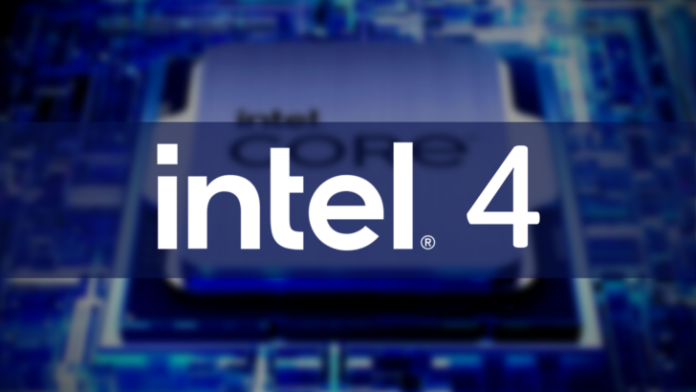
Intel has expressed confidence in its "Intel 4" process node which will be utilized in the upcoming Meteor Lake CPUs due for launch in September.
Intel 4 Process Node Has Surpassed TSMC's 5nm Process & Targeting 3nm Competitors as Well
For those who don't know, Intel 4 is a 7nm process, the company's first implementation of EUV lithography. The process technology will be featured in Intel's Meteor Lake CPUs & is said to be highly power efficient from the previous "Intel 7" process. The EUV lithography would increase transistor density twice versus the previously designed Intel 7 or 10nm ESF technology node.
The research firm IC Knowledge has revealed that Intel 4 is ahead of TSMC's 5nm process and matches the 3nm process from its competitors; we could expect some serious performance gains with the new Meteor Lake lineup, especially within the efficiency department. The firm has also revealed that Intel 4 also gives tough competition to Samsung's 3nm & TSMC's 3nm process node, which has recently gained immense interest from the industry.
The new process node is already in mass production for Meteor Lake at the Oregon D1 fab (D1C, D1D, D1X) and the total production output of the fab is around 40,000 chips per month for all of the processes. Fab 34 located in Ireland is also expected to take some capacity but is currently undergoing evaluation with test chips.

Another fact to highlight about Intel 4 is the utilization of "Backside Power Delivery," which the company calls "PowerVia." It is a delivery process that works in the backside to solve bottleneck issues within the interconnect seen in silicon architectures, significantly increasing utilization rates. This process will be utilized in Meteor Lake E-Cores, so you can expect the Meteor Lake lineup to reach new levels.
Intel 4 will focus on power efficiency, delivering higher performance and superior technology than its competitors. With the release of Meteor Lake processors, Intel 4 will show its true colors, and as pledged by Intel itself, the process will be a breakthrough for the dwindling foundry division. That's not all, the Intel 3 process node is also seeing great results as the process node is expected for the second half of this year while the 20A & 18A nodes are expected for 1H and 2H 2024, respectively. With Innovation 2023 closing in, we can expect to hear a lot more on next-generation CPUs and the respective process nodes from Chipzilla itself.
WccftechContinue reading/original-link]





